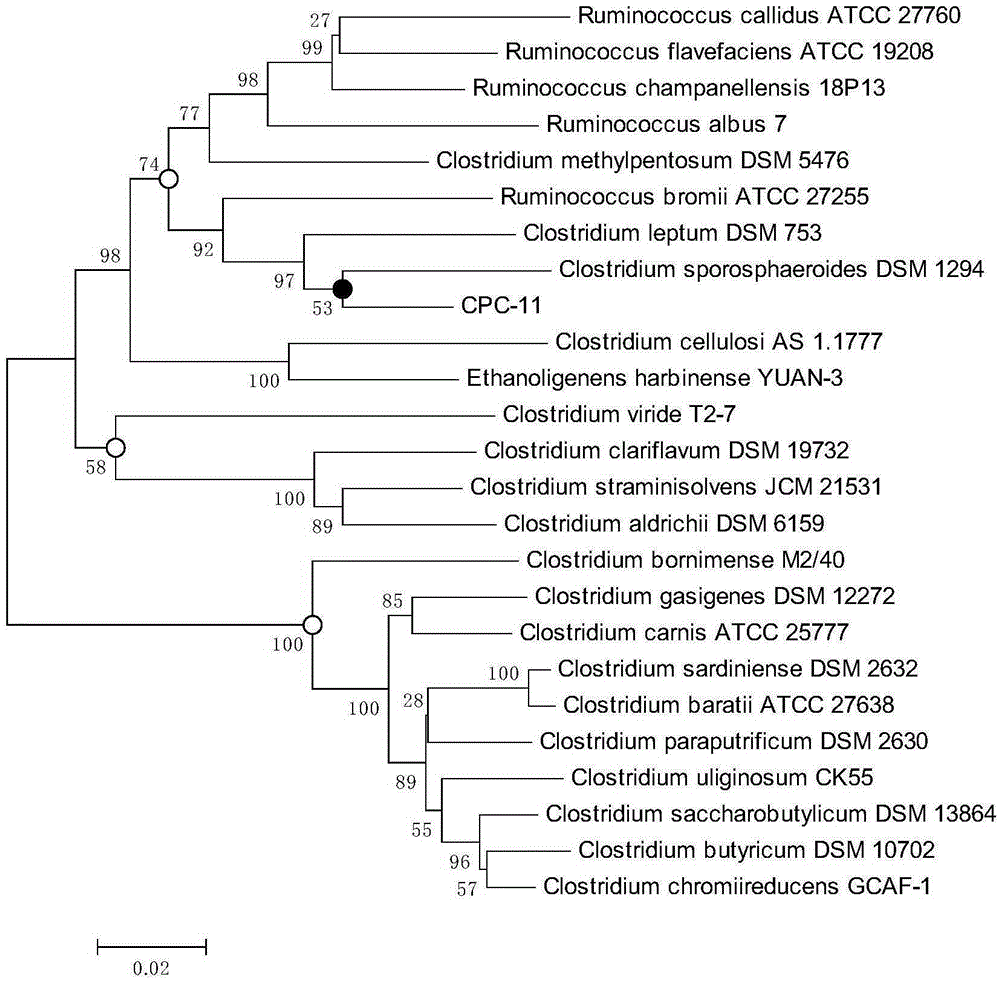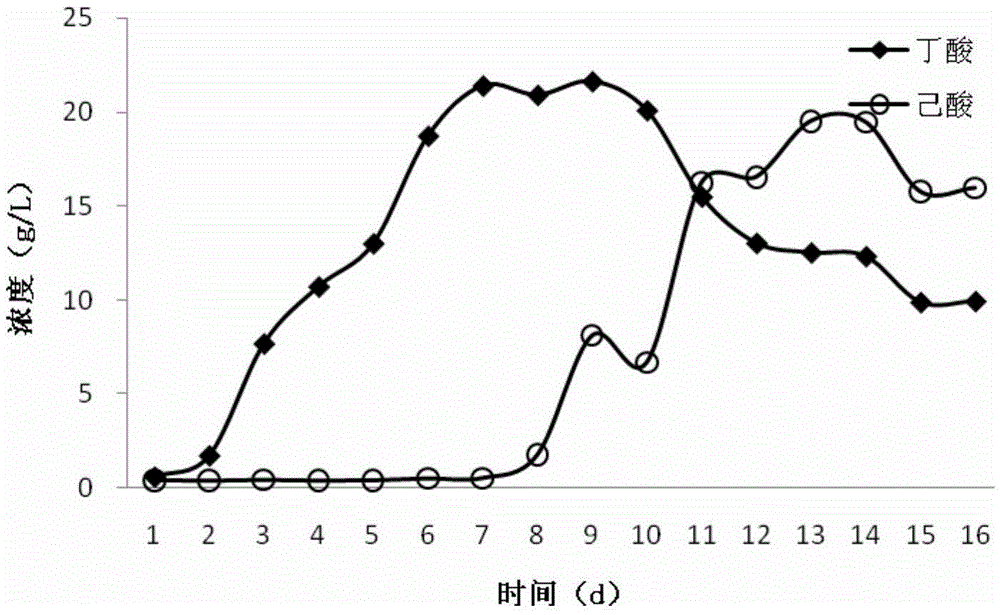Rumen clostridium using lactic acid for producing hexanoic acid and application thereof
A rumen bacterium, a technology for use, applied in the field of microorganisms, to achieve good application prospects, good growth stability, and the effect of improving flavor and quality
- Summary
- Abstract
- Description
- Claims
- Application Information
AI Technical Summary
Problems solved by technology
Method used
Image
Examples
Embodiment 1
[0027] Isolation, purification and cultivation of embodiment 1 bacterial classification
[0028] 1. Culture medium for isolation and culture
[0029] Medium composition (per 100mL): 1g casein peptone, 0.25g yeast juice, 0.4g NaHCO 3 ,0.1g cysteine,0.045gK 2 HPO4, 0.045gKH 2 PO 4 ,0.09gNaCl,0.009gMgSO 4 ·7H 2 O,0.009gCaCl 2 , 0.1mg resazurin, 1mg oxyhemoglobin, 0.5mL lactic acid, 0.1ml trace element solution, 1ml vitamin solution. Distilled water 100ml. in:
[0030] Trace element solution (per L): FeCl 2 .4H 2 O1.5g; CoCl 2 .6H 2 O0.19g; MnCl 2 .4H 2 O0.1g; ZnCl 2 0.07g; NaMO 4 .2H 2 O0.036g; NiCl 2 .6H 2 O0.024g; H 3 BO 3 0.006g; CuCl 2 .2H 2 O0.002g; HCl (25% solution) 10ml.
[0031] Vitamin solution (per L): p-aminobenzoic acid 0.04g; biotin 0.01g; niacin 0.1g; B 5 0.05g; B 6 0.15g; B 1 0.1g; B 12 0.05g; D.L-lipoic acid 0.03g; B 2 0.03g; folic acid 0.01g.
[0032] 2. Separation process
[0033] (1) Enrichment of strains
[0034] Take 1g of pit...
Embodiment 2
[0043] The cultivation and identification of embodiment two strains
[0044] 1. Morphological characteristics
[0045] Colony morphology: Clostridium CGMCCNo:9926 was cultivated on the plate for 7 days, the colony was round, milky white, smooth and moist, slightly raised, sticky, easy to pick, and the diameter of the colony was 1.5mm.
[0046] Bacteria morphology: Gram staining is positive, the bacteria are spherical, with a diameter of 2.0-2.5um. SEM photos see figure 1 (SEM, 5200×)
[0047] 2. Physiological and biochemical characteristics
[0048] with BiologAN MicroPlates TM The physiological and biochemical characteristics of the Clostridium are shown in Table 1 through analysis with the API20A anaerobic identification system.
[0049] Table 1 Physiological and biochemical characteristics of CPC-11
[0050]
[0051]
[0052] 3. Molecular biological characteristics
[0053] The bacterial 16SrRNA universal primer pair 27f-1492r was used to amplify the 16SrRNA of...
Embodiment 3
[0060] Example 3 The impact test of the initial pH value on the production of caproic acid
[0061] Adopt liquid culture medium (see embodiment 1), add lactic acid to final concentration and be 10g / L, regulate the pH value of culture medium with sodium hydroxide and hydrochloric acid, obtain initial pH and be respectively 5.5, 6.0, 6.5, 7.0, 7.5, 8.0 altogether 6 acid-base gradients, filled with N 2 15 minutes, then dispense 50mL into 250ml anaerobic bottles, and sterilize at 121°C for 15min. Inoculate CPC-11 bacterial solution by 5% (v / v) (concentration is about 10 8 CFU / mL), cultured in a shaker at 30° C. at 150 rpm for 7 days, and measured the hexanoic acid production and conversion rate. The results are shown in Table 3.
[0062] Table 3, the influence of different pH on producing caproic acid
[0063]
[0064]
[0065] It can be seen from the table that CPC-11 can use lactic acid to produce caproic acid well in the pH range of 5.0-6.5, and the optimum pH for pro...
PUM
 Login to View More
Login to View More Abstract
Description
Claims
Application Information
 Login to View More
Login to View More - R&D
- Intellectual Property
- Life Sciences
- Materials
- Tech Scout
- Unparalleled Data Quality
- Higher Quality Content
- 60% Fewer Hallucinations
Browse by: Latest US Patents, China's latest patents, Technical Efficacy Thesaurus, Application Domain, Technology Topic, Popular Technical Reports.
© 2025 PatSnap. All rights reserved.Legal|Privacy policy|Modern Slavery Act Transparency Statement|Sitemap|About US| Contact US: help@patsnap.com



